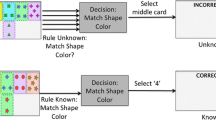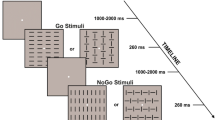Abstract
Functional magnetic resonance imaging (fMRI) data analysis is developing rapidly in a fast emerging society, because of temporal and spatial resolution and the inoffensive feature of their acquisition in human brains. Spatial resolution governs how “sharp” the image is in appearance, whereas temporal resolution denotes the precision of a measurement with respect to time. The goal of fMRI technique is to identify the activation pattern and functional connectivity in the brain regions. In our study, artificial neural network technique was used for the identification and classification of decision-making voxels of fMRI data based on Brodmann areas 10 and 47 from the prefrontal cortex of human brain. The total number of voxels of Brodmann areas was 159, and we determined that some particular voxels played dominant role for decision-making process while performing a visual task. We also analyzed true positive and false positive classification rates between two decisions in the context of a well-known receiver operating characteristic curve (ROC).








Similar content being viewed by others
References
Norman KA, Polyn SM (2006) Beyond mind-reading; multi-voxel pattern analysis of fMRI data. Trends Cogn Sci 10(9):424–430
Onut IV, Ghorbani AA (2004) Classifying cognitive states from fMRI data using neural networks. In: IEEE international joint conference on neural networks, Budapest, Hungary
Ye Z, Kutas M (2012) Rearranging the world: neural network supporting the processing of temporal connectives. NeuroImage 59(4):3662–3667
Boehm O, Hardoon DR (2011) Classifying cognitive states of brain activity via one-class neural networks with feature selection by genetic algorithms. Int J Mach Learn Cybernet 2(3):125–134
Niculescu RS, Mitchell TM (2006) Automated fMRI feature abstraction using neural network clustering techniques. In: NIPS 06 workshops, Whistler, Canada
Daria R, Isabelle R, Giovanna Z (2006) Language: normal and pathological development. John Libbey Eurotext, Montrouge
Alabi M, Issa S, Afolayan R (2013) An application of artificial intelligent neural network and discriminant analyses on credit scoring. Math Theory Model 3(11):20–28
Peterson C, Rognvaldsson T (1991) An introduction to artificial neural networks. In: 14th CERN School of computing, Sweden
Ahmad F, Ullah G (2012) A neighborhood method for statistical analysis of fMRI data. Open J Biophys 2(1):15–22
Franck R, Schmied A (2004) Predicting currency crisis contagion from East Asia to Russia and Brazil: an artificial neural network approach. AMCB working paper 2, Bar-Ilan University
Gunther F, Fritsch S (2010) Neuralnet: training of neural networks. R J 2(1):30–38
Sarle WS (1994) Neural networks and statistical models. In: 19th annual SAS users group international conference, USA
Ma N, Zhai Y, Li WF, Li CH, Wang SS, Zhou L (2013) Neural network algorithm based method for stock price trend prediction. J Appl Sci 13(22):5384–5390
Zhang G, Eddy PB, Hu YM (1998) Forecasting with artificial neural networks: the state of the art. Int J Forecast 14(1):35–62
Ahmad Z, Saleem A (2014) Impact of governance on human development. Pak J Commer Soc Sci 8(3):612–628
Laurence JG (1994) Brodmann’s localisation in the cerebral cortex. Smith-Gordon Company, Barnet, pp 105–125
Belilovsky A, Gkirtzou K, Misyrlis M, Konova AB, Honorio J, Klein NA, Goldstein RZ, Samaras D, Blaschko MB (2015) Predictive sparse modeling of fMRI data for improved classification, regression, and visualization using the k-support norm. Comput Med Imaging Graph 46(1):40–46
Floren A, Naylor B, Miikkulaninen R, Ress D (2015) Accurately decoding visual information from fMRI data obtained in a realistic virtual environment. Front Hum Neurosci 9(38):1–13
Ahmad F, Lee N, Kim E, Kim SH, Park HW (2013) A shrinkage method for causal network detection of brain regions. Int J Imaging Syst Technol 23(2):969–981
Author information
Authors and Affiliations
Corresponding author
Rights and permissions
About this article
Cite this article
Ahmad, F., Ahmad, I. & Dar, W.M. Identification and classification of voxels of human brain for rewardless-related decision making using ANN technique. Neural Comput & Applic 28 (Suppl 1), 1035–1041 (2017). https://doi.org/10.1007/s00521-016-2413-6
Received:
Accepted:
Published:
Issue Date:
DOI: https://doi.org/10.1007/s00521-016-2413-6




